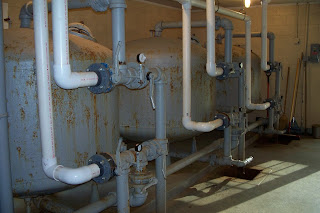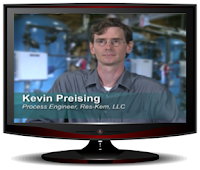Many companies are on a constant quest to run their business in the most energy-conscious, money-saving way possible. For those whose operations involve a low-pressure boiler system environment, investing in a condensate polisher is one of the easiest ways to “get greener” through energy efficiency and dollar savings.
In most every boiler plant, cold water softeners are used to treat boiler water makeup. What’s less common is the use of a condensate polisher which treats condensate return for resuse as boiler feedwater. There are several differences between a water softener and a condensate polisher. Let’s look at a few:
Water Softener vs. Condensate Polisher
Installion – a water softener is typically installed “upfront” with the boiler system in order to meet the ASME/manufacturer’s water quality specifications. A condensate polisher is often an “add-on” to an existing boiler system once steam traps, condensate piping, and condensate receivers age and form deposits (such as iron, copper, and magnesium) that cause thermal resistance to drop.
Materials of construction – water softeners are constructed of epoxy coated tanks or poly-lined FRP tanks, with cast iron or PVC valves and black iron or PVC piping. Res-Kem’s standard condensate polisher systems are fabricated completely with stainless steel. This all stainless steel construction is the best material choice for safe operation over a long time.
Temperature & flow rate – condensate polishers are built to operate at a much higher temperature and flow rate. Where water softeners operate below 80 degrees F, polishers operate substantially above 120 degrees F. The higher temperature and flow rate allow a polisher to acts as both an ion exchange device AND filter, removing copper and iron oxides that cause scale buildup. This oxide removal is not possible with a water softener system, which act only as an ion exchange device with limited filtering capabilities.
Stainless steel surface preparation – condensate polishers are passivated. After fabrication, to further enhance the corrosion resistance of our stainless steel components, all of our welded stainless steel piping and tanks are passivated. This is an expensive, multi-step process which includes bead blasting and passivation, for the longest condensate polisher life.
So what do all these differences ultimately mean for a customer who invests in a condensate polisher?
1) Fuel savings – a condensate polisher saves fuel by allowing higher boilerwater cycles of concentration by reducing the Fe and Cu oxides that cause scale buildup. Fuel savings is also realized through the reuse of heat in the steam condensate.
2) Reduced chemical usage – because of the reduction of oxides and scale buildup in the steam loop, less investment is needed in internal boiler treatment chemicals that are used to remove buildup.
3) Longer and safer service life – a condensate polisher’s passivated, stainless steel construction ensures optimal operation for many years, with minimal routine maintenance. The typical life expectancy of a condensate polisher is 10-20 years.
Learn more about the customizable standard features and specifications of eight of Res-Kem’s recently manufactured condensate polisher models.
Download our brochure today, then give us a call to see how we can help you “get greener” with more energy efficiency and more money in your pocket.









CP-2_internals+009.jpg)
_on_truck_rec'd(08.02.12)+004.jpg)












